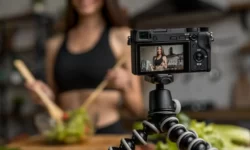Facebook and Instagram Ads Cost: A Comprehensive Guide
“Did you know that billions of people check Facebook and Instagram daily?” This incredible reach makes both platforms goldmines for businesses, big or small, looking to tap into their potential audience. In our hyper-connected age, advertising on Facebook and Instagram has become almost a rite of passage for businesses seeking digital visibility. But one question remains ever-present: how much does it cost?
Facebook and Instagram, while intertwined, offer unique advertising experiences. While the audience reach is vast, the costs associated with advertising on these platforms can be a source of confusion for many. Various factors play into the final amount you’ll see on your invoice. From the time of year to the specific audience you’re targeting, ad costs are anything but static. This guide aims to break down the nuances of Facebook and Instagram advertising costs, ensuring you’re well-equipped to make informed decisions for your next campaign.
1. Understanding the Ad Auction Process
Every time you decide to run an ad on Facebook or Instagram, you’re not simply paying a fixed price to have it displayed. Instead, you’re entering an auction. But don’t let that word intimidate you. It’s not the fast-talking, gavel-banging auction you might be picturing.
Whenever a user opens Facebook or Instagram, the platforms instantly hold a rapid-fire auction to decide which ad to show them. Advertisers place bids indicating how much they’re willing to pay to have their ad displayed to that specific user. However, it’s not just about the highest bidder. This is where ad relevance and quality come into play.
The platforms aim to show users ads that are relevant and engaging. As a result, ads with a high relevance score and good quality stand a better chance of being displayed, even if the bid is slightly lower than a competing ad. The relevance score is determined by the projected positive and negative feedback an ad is expected to receive. In essence, if you’re promoting quality content that resonates with your target audience, you stand a better chance in the auction and may even end up paying less.
2. Factors Determining Ad Costs
If you’ve ever wondered why you’re paying a certain amount for your Facebook or Instagram ad, you’re not alone. The cost isn’t random. Here are the key elements that influence how much you’ll be billed:
- Time of the Year and Industry Competition: Seasons matter. Think about times like Black Friday, Christmas, or Valentine’s Day when businesses ramp up their advertising. Higher competition means higher ad costs. So, planning your ads outside of peak seasons might save you some dollars.
- Target Audience Demographics and Location: Who you’re trying to reach can influence cost. For example, targeting an audience in a bustling city might be pricier than one in a smaller town. Age, gender, and interests can also play roles. The more specific and niche your target group, the potential for higher costs due to increased specificity.
- Ad Quality and Relevance Score: As discussed earlier, this is crucial. Ads that resonate with users and get positive interactions can cost less. If users find your ad engaging, the platforms view it as valuable and are more likely to display it without breaking your bank.
- Placement: Not all ad spots are created equal. An ad on Facebook’s news feed might have a different cost than one on Instagram stories. It’s essential to choose your placement wisely, factoring in where your audience spends most of their time and the nature of your ad content.
3. Comparing Facebook and Instagram Ad Costs
When it comes to the battle of costs between Facebook and Instagram, there’s no one-size-fits-all answer. Each platform has its merits, and the costs vary based on a multitude of factors.
Average Cost Benchmarks:
- Facebook: Historically, Facebook might offer a slightly lower cost per click or impression due to its broader user base and mature advertising system.
- Instagram: Often seen as a platform for a younger, more engaged audience, Instagram might sometimes have higher costs, especially for visually appealing industries like fashion or travel.
Which Platform is More Cost-Effective?:
Deciding between Facebook and Instagram boils down to your campaign goals. If you’re aiming for brand visibility and a broader reach, Facebook, with its massive user base, might be the way to go. However, if your goal is engagement, especially with a younger demographic, Instagram, with its visual-centric approach, might be the better bet.
Remember, while costs are an essential factor, the ultimate goal is return on investment. It’s not about spending less but about spending smartly where you get the most value. Choose the platform that aligns best with your business objectives, target audience, and content style.
4. Strategies to Optimize Ad Spend
It’s one thing to spend money on Facebook and Instagram ads, and it’s another to ensure you’re getting the best bang for your buck. Here’s how to make sure every penny counts:
- Importance of A/B Testing:
- Imagine trying two different dress styles to see which one suits you best. That’s what A/B testing is in the advertising world. By creating two versions of an ad (with different images, text, or call-to-action) and seeing which one performs better, you can get clearer insights into what resonates with your audience. It’s a simple yet effective way to stretch your ad dollar further.
- Using Audience Insights for Targeted Campaigns:
- Both Facebook and Instagram offer rich insights into your audience’s behavior, likes, and preferences. Dive deep into these stats. The better you understand your audience, the more targeted (and hence, cost-effective) your campaigns can be.
- Periodic Review and Adjustments of Ad Creatives and Call-to-Action:
- Don’t set and forget. Regularly review how your ads are performing. If something isn’t clicking with your audience, maybe it’s time for a new image or a punchier call-to-action. Being agile and willing to adjust can often lead to better performance without upping your spend.
5. Real-world Examples
Seeing is believing, right? Here are a couple of real-world examples that show just how impactful a well-optimized ad campaign can be:
Brand A’s Success with Carousel Ads:
Brand A, a budding e-commerce store, decided to showcase their top-selling products using Facebook’s carousel ads. They allocated a moderate budget but ensured the visuals were high-quality and the descriptions compelling. The result? A 2.5x increase in sales from those who clicked on the ad. Moreover, their cost per click was 20% lower than their usual single-image ads.
Brand B’s Instagram Stories Triumph:
Brand B, a new fitness app, leveraged Instagram stories to offer quick workout tips with a swipe-up feature leading to their app’s download page. They made use of engaging video content, a catchy call-to-action, and targeted fitness enthusiasts. Not only did their app downloads see a significant boost, but their cost per download was also 30% less than their previous ad campaigns on other platforms.
Both these examples show that with the right strategy and understanding of the platform, businesses can achieve impressive results without spending a fortune. It underscores the importance of being strategic, staying updated with platform features, and always keeping the audience’s preferences front and center.
6. FAQs About Facebook and Instagram Ad Costs
Q: How do Facebook and Instagram ad costs compare to other platforms like TikTok or Pinterest?
A: Generally speaking, Facebook and Instagram have established themselves as giants in the advertising world due to their vast user base. As a result, while they offer broader reach and sophisticated targeting options, their costs might be a tad higher compared to newer platforms like TikTok or Pinterest. However, the right strategy can still make campaigns on Facebook and Instagram very cost-effective.
Q: Can I set a daily budget for my ads on these platforms?
A: Absolutely! Both Facebook and Instagram offer flexibility in budgeting. Advertisers can choose a daily budget to keep spending in check or opt for a lifetime budget if they have a specific amount set aside for a campaign.
Q: Does choosing automatic placements reduce my ad costs?
A: Choosing automatic placements lets Facebook’s algorithm decide the best places to show your ads across its services. This can be a cost-effective method as the algorithm aims to get the most results for your specified budget.
Q: How does the ad’s quality score impact the cost?
A: Quality or relevance score is a crucial metric. Ads with higher scores are viewed as more relevant to the audience, leading to lower costs and better placement. Think of it as a reward for creating content that resonates with your target audience.
Q: Are video ads more expensive than image ads?
A: While producing video ads might incur higher initial costs, their cost-per-impression on platforms might be comparable to image ads. The catch is, video ads often drive higher engagement, potentially offering better value for your investment.
7. Conclusion
Navigating the world of Facebook and Instagram advertising can seem daunting, especially when it comes to understanding costs. But as with anything, knowledge is power. By grasping the various factors influencing ad costs and being armed with the right strategies, advertisers can ensure their budget is put to the best use. Remember, it’s not always about spending more; it’s about spending smart. As the digital landscape continues to evolve, it’s essential for advertisers to remain agile, continually refining and adapting their strategies to achieve the best return on investment. So, dive in, experiment, learn, and adapt to make the most of your ad campaigns.










